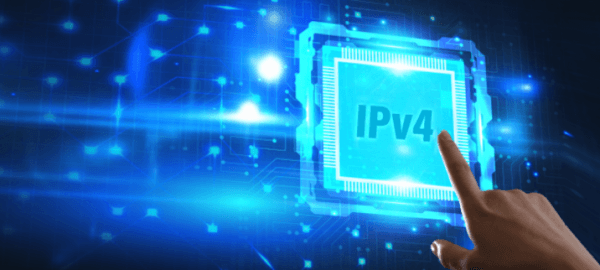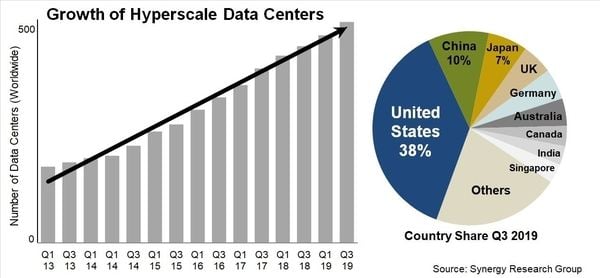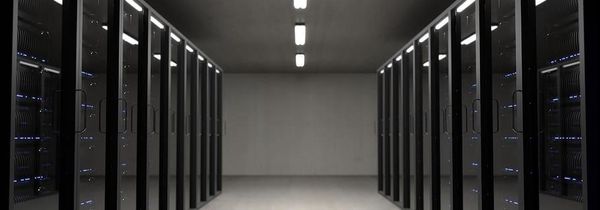
ARIN IPv4 Transfer Process
June 18, 2020
How Does Data Disaster Recovery Work?
June 24, 2020The COVID-19 pandemic has shaken the world to its very core. It has not only put the U.S. to the test but the whole world. The virus has tested the capacity of the healthcare system to the efficiency of supply chains. Similarly, data centers have also put into test during this pandemic to demonstrate if they are “essential services”. If they deliver capacity and make working, exercising, learning, socializing, shopping, attending social events, and entertainment from home reality.
Some of the most successful tech companies consider their data centers as their strategic assets including Google, Apple, and Facebook. This can be attributed to its enormous competitive advantage. Today, both large and small organizations want to turn their data centers into strategic assets as well. However, the only way to it is by striking a balance between reliability and efficiency.

While it might sound very easy to achieve it is not! It was much easier during the time of IT monopoly on enterprise computing. To remain competitive, IT departments need to and must reorganize data centers. This can enable then successfully manage the collection of and access to data and improve service during the pandemic.
Since the digital transformation, data has been growing at an unprecedented rate. Before the pandemic, Gartner forecasted cloud computing will reach nearly $300 billion by 2021, up from $175.8 billion in 2018. Post-pandemic demand for data center solutions will be even higher than ever. According to a report by Australia’s National Broadband Network (NBN), the daytime usage of broadband increase by nearly 70-80% in comparison to February.
Data Center Is Data
Everyday operations can easily make us forget why a data center is different from other parts of the business. Data is one of the most important aspects when running business operations. It is the one place to store, process, and distribute large amounts of business-relevant data.
There are various departments in the organization where data may be generated and use as part of operations, analysis, and planning work. However, data centers are the only places where it is reliably gathered, protected, and preserved. To sum up, they are one part of the organization that is capable of treating data as an asset for growth business by capturing the most value from data. The IT department needs to strike a balance between operating and capital expenses to support business initiatives from the operation.
The pandemic has led to the surge in the usage of cloud platforms and data-intensive applications. Some of the questions many of us are asking is what’s next? Where do we go from here? Future of data centers post-pandemic?
Benefits of Data Center
The advancement of technology has made data centers are the powerhouses of the industrial world. But as technology is continuously evolving process so is the change in the way organizations do business. This also impacts the requirement for data and power. An increase in requirement for resources is sometimes too much for many companies to handle internally with existing infrastructure. It may require the company to invest many hours and personnel to maintain such high demand. Data centers in such companies allow them to outsource their power needs.

Today’s COVID-19 crisis is expected to drive up demand for everything from power and cooling infrastructure to IT hardware and software. This is expected to gear for cloud service provider data centers, according to the market research firm Omdia. There are several ways organizations benefit from data centers. This can help companies enormously as the company can then shift its focus on its consumer objectives instead of technological maintenance.
Protecting Power
Servers kept onsite are prone to more broadband issues. This can wreak havoc on organizations due to technological and natural power outages. Businesses that outsource data can lessen the impact of a power failure or other disaster. Furthermore, in the events of power loss for even 1/50 of second, IT equipment might become unavailable for 15 minutes to several hours. Sometimes these power failures might become incurable if they result in data loss.
Secure Data Storage
In recent years, the number of cyber-attacks on companies has increased which has also intensified the problems and risks associated with data loss. Data centers can prove to be a much more secure option for data storage than traditional storage methods. Storage systems, network devices, and servers have all become miniaturized so in cases of power conditions they falter and fail which was earlier withstood by previous generation equipment. Data centers not only provide reliable storage but they also eliminate the glitches of portable technology.
Cutting Costs
According to a study sponsored by the Electric Power Research Institute (EPRI), on 2 million business establishments, the U.S. losses an annual $45.7 billion to outages and another $6.7 billion to power quality disturbances. A portion of this loss can be eliminated through data centers as they utilize a system that has the potential to withstand unfavorable power conditions. Conditions are not even favorable to generators and surge suppressors as they require significant energy to maintain.
These components that are sometimes crucial to the company are also not immune to electrical disturbances, contributing to power costs. In recent years, the cost of power and cooling has increased. Managers of the data center have responsible manages to achieve availability and reduction in power costs.
Improving Efficiency
Electrical power, by the law itself, can vary widely to cause several problems for IT equipment. Legally, the voltage can vary from 5.7% to 8.3%, according to the current U.S. standards. Meaning the utility services might promise 208 volts but legally deliver 191 to 220 volts. This uncertainty around power levels can be eliminated by data centers with strict guidelines and monitoring processes.
Moreover, businesses may have their power source bet utility power isn’t always clean. So the public utilities are used to supply the central hub. Numerous organizations utilize the same power grid slowing down the IT functions of companies. Such companies will notice improvements in their technological speed and functioning due to data centers privatizes power. This ensures only one company is connected to one grid.
Adjusting Business to Benefit from Data Center
Technological advancements are changing current working models. However, changing human behavior to adopt new conditions is hard. If companies and businesses want to fully benefit from the data center there might need to make some changes to their workflows. The potential benefits can be transformative both financially and operationally for businesses that are ready to embrace and reinvent their data and data center strategies.

